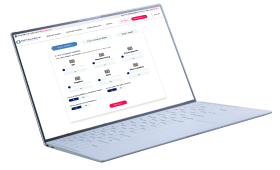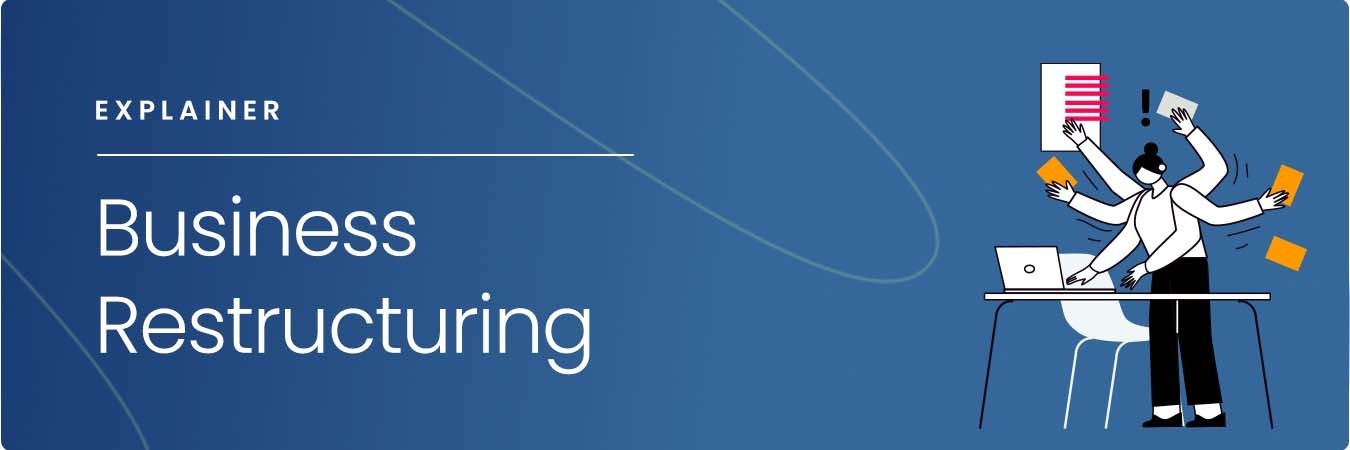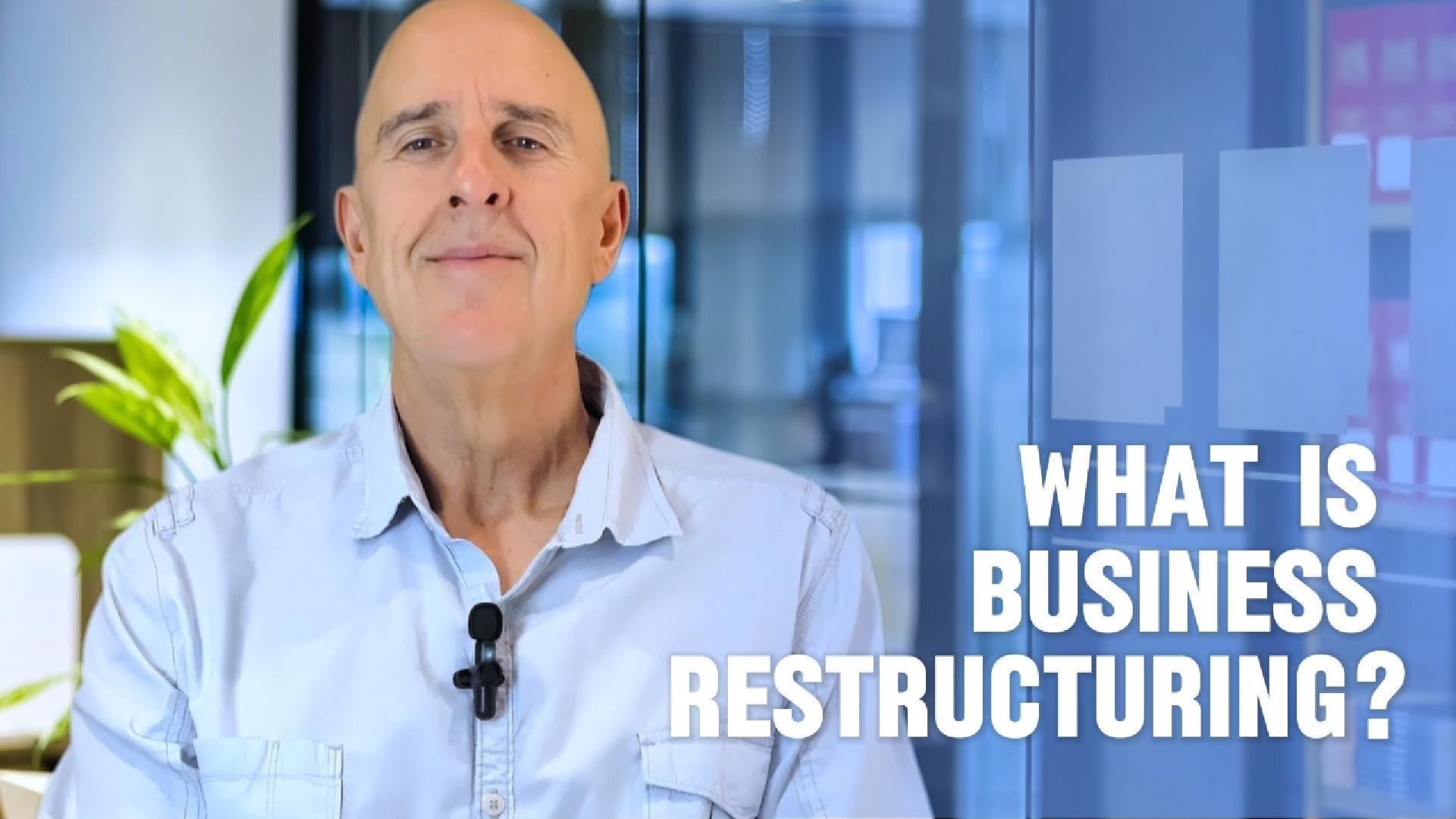
Understand your company's position and learn more about the options available
Require Immediate Support? Free Director Helpline: 0800 644 6080
Free Director Helpline: 0800 644 6080
Updated:
Restructuring a company involves changing the existing financial, operational, and legal structure to improve efficiency, profitability, and cash flow. Business restructuring comes in a variety of forms and can include a process of refinancing, streamlining, and corporate simplification.
Restructuring involves changing the financial, operational, legal, or other structures of a business with the purpose of making it a more efficient, as well as a more profitable, organisation.
Although a process of restructuring can be utilised by a financially healthy company, it is often the case that a business which is at risk of becoming insolvent will look to deal with its debts using a restructuring framework.
Restructuring a financially distressed business is not a one size fits all process; what may work for one business, could be wholly inappropriate for another. In order to be effective, the debt restructuring process needs the input of a business turnaround expert working closely with the company’s management team and other key stakeholders to plot a way forward.
As previously stated, restructuring is not limited to financially distressed or heavily indebted companies. Businesses often turn to restructuring when a need for change has been highlighted. While this could be down to financial reasons, it also includes macro and micro-economic factors which have the potential to change the way a company does businesses including new legislation, changing consumer preferences, or the wider economic and political landscape.

A formal restructuring process is often used as a way to restructure company debt, making it less costly and less onerous on the business and its cash flow position.
Restructuring company debt can be achieved in a number of ways, including entering into informal negotiations with creditors to amend the current repayment schedule, refinancing existing borrowing to a more favourable interest rate, or considering a more formal insolvency solution such as a Company Voluntary Arrangement (CVA).
For many companies considering restructuring, there is a viable and profitable business at the heart of what they do; however, they are impeded from making progress due to outstanding historical debts. Restructuring these existing company debts can allow a business to immediately improve its cash flow, making investment and growth a real possibility.
Restructuring company debts should always be done under the guidance of a professional who can assess your business, its current operations, and future viability. Piling more debt on an already over-leveraged business can be a recipe for disaster, therefore this tactic should only be implemented as part of a robust restructuring strategy devised by a rescue and turnaround specialist.
Restructuring a company is the perfect opportunity to reflect not only on the current position of the business, but also taking steps to ensure it is appropriate for what the future may hold.
There are huge benefits to restructuring a company and directors should not be afraid of the process. Just because things have always been done a certain way, does not mean that they need to - or indeed should - continue to be done that way.
Free 60 Second Test
For Ltd Company Directors
What are you looking to do?
Choose below:
In order for a restructuring process to be successful, it needs to be approached on a case-by-case basis, taking into account the company’s current financial and operational position, the likely short- and medium-term outlook, as well as the objectives for the company’s future. Here are the main restructuring processes which can be considered to help turn around a company:
Restructuring often takes place when a company is experiencing financial difficulty, or as part of a formal insolvency process such as company administration. Administration aims to save viable elements of a distressed company to ultimately allow trade to continue. If this cannot be done, administrators will work to achieve better returns for creditors than would be possible should the company have been liquidated without first being in administration.
If a company does enter administration it will be granted a moratorium which allows for time, space, as well as legal protection while the company is restructured by the appointed insolvency practitioner. With an administration, the restructuring process often takes place while the business continues to operate.

Get a Quote Find Your Nearest Office
Pre-pack is a special type of administration process whereby the sale of a distressed company’s assets is negotiated prior to an insolvency practitioner being appointed. The buyer can be an unconnected third party or a competitor, however, in many cases, the purchaser is the directors of the old company operating via a newly set up limited company (known as a ‘newco’).
Once the pre-pack sale has been agreed, an insolvency practitioner will be appointed and the transaction will complete immediately. The old company will then be placed into liquidation with any assets which didn’t form part the sale being put towards settling the outstanding debts of the company.
Employee rights are protected during pre-pack administration thanks to legislation known as the Transfer of Undertakings (Protection of Employment Regulations (TUPE)). As part of TUPE, employees will be transferred to the newco and will retain their existing employment terms and conditions. Some redundancies may occur, however, if the structure of the company is changed as part of the sale.
A Company Voluntary Arrangement – or CVA – is a formal business debt restructuring process which can help an indebted company by lowering the cost of its existing liabilities. A CVA functions as a formal payment plan which is entered into by a company and its creditors. The process is supervised by a licensed insolvency practitioner who will facilitate all negotiations and work towards a mutually agreeable payment plan which satisfies creditors while also freeing up cash flow for the distressed company. If at least 75% (by value) of creditors agree to implement the CVA, it becomes legally-binding on all parties.
A CVA typically lasts between 3-5 years, during which time the indebted company will make a series of monthly repayments to the appointed insolvency practitioner who will then distribute this money between creditors on a pre-agreed basis. Depending on what the company can afford to repay, some debt may be written off as part of the process.
“I completed the simple on line form, received the free guide by email immediately and then a call from Tom who was so very helpful. Highly recommend this service”
Pauline Whitehead
If a company is struggling with tax arrears, a Time to Pay (TTP) arrangement may be a way to restructure this debt into an affordable payment plan. As the name suggests, TTP plans give the company additional time to bring their HMRC debts up to date. Plans typically run for between 3-6 months, however, terms of up to 12 months can be negotiated in certain circumstances. Time to Pay arrangements are not considered a formal insolvency process.
TTPs are negotiated directly with HMRC who will then have the final say as to whether additional time to repay is granted. When negotiating a TTP with HMRC, it is vital you strike the right balance between offering a large enough monthly repayment which will allow you to clear your tax debts in a timely manner, while also ensuring you can afford to keep up with this amount for the duration of the plan. If HMRC are in any doubt as to whether you can sustain the proposed TTP amount, they will reject your request and will seek alternative ways of recovering the money you owe.
You can employ the services of a professional to help facilitate these initial discussions rather than entering into negotiations with HMRC yourself. This can increase your chances of securing a TTP arrangement significantly.
Ensuring a company is appropriately financed could make all the difference when it comes to a company being able to survive when times get tough. When restructuring a company, assessing the suitability of its existing finance obligations, as well as considering whether new cash needs to injected into the business, is high up on the priority list. While accruing too much debt can undoubtedly be detrimental to a company, used correctly, borrowing can open up new avenues and provide a much-needed safety net.
Existing debt borrowed against a high rate of interest could have a hugely detrimental effect on the business’s monthly cash flow. Depending on the position of the company, it may be possible to restructure existing company debt to a lower rate of interest, or even look at spreading the money owed over a longer period of time if cash flow savings need to be made to safeguard the immediate future of the company.
In other instances, securing a new channel of funding could provide the company the cash boost it needs to embark on a growth or expansion project, or simply stabilise cash flow if this has become squeezed. This may take the form of a traditional loan, or more specialised borrowing options such as invoice finance, asset-based lending, or a short-term bridging loan.
There are many different aspects to restructuring. One of the most common types of restructuring is through a process of company streamlining and business simplification. This involves identifying non-performing areas or departments of a company which can be closed, or at least scaled down, allowing for funds and resources to be channelled towards more profitable areas of the business. A slimmed down, more refined organisational structure allows for increased efficiency as well as potentially significant operating cost reductions.
After a company has been appropriately restructured, it will have increased resilience, setting it up well for the future. Taking into account potential threats - which may be different to those risks identified when the business was first launched - ensures it is fit for purpose for the present time, while also improving stability, preserving stakeholder value, and increasing viability long-term.
Corporate Restructuring Options
When a company is in difficulty, sometimes a process of financial and/or operational restructuring is needed. From CVAs through to Administration, there are a range of rescue and recovery options to help you get back on track.
Learn more about restructuring by calling our team - 0800 644 6080
Embarking on a process of operational or debt restructuring can help ensure your company is in an optimal position to take the next step in its journey. Real Business Rescue’s team of licensed insolvency practitioners and business turnaround experts can talk you through the entire restructuring process and be there to support your business every step of the way.
To arrange an initial consultation with one of our restructuring specialists, call our team today on 0800 644 6080.
Still unsure whether liquidation is right for your company? Don't worry, the experts at Real Business Rescue are here to help. Our licensed insolvency practitioners will take the time to understand the problems your company is facing before recommending the best course of action going forward based on your own unique circumstances.

Complete the below to get in touch
For Ltd Company Directors
What are you looking to do?
Choose below:
We provide free confidential advice with absolutely no obligation.
Our expert and non-judgemental team are ready to assist directors and stakeholders today.

Understand your company's position and learn more about the options available

Find your nearest office - we have more than 100 across the UK. Remote Video Meetings are also available.

Free, confidential, and trusted advice for company directors across the UK.